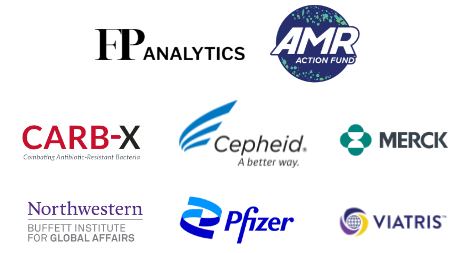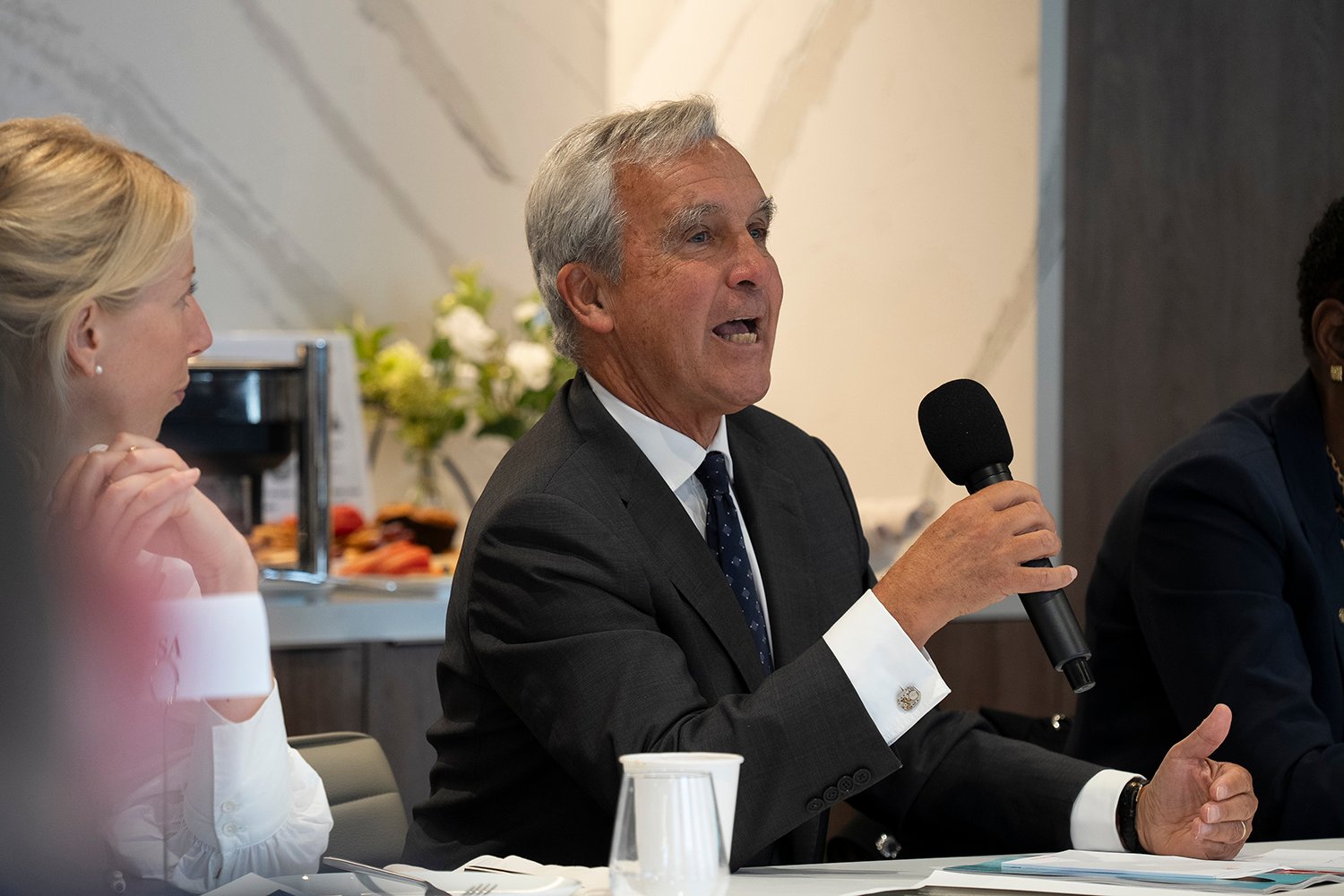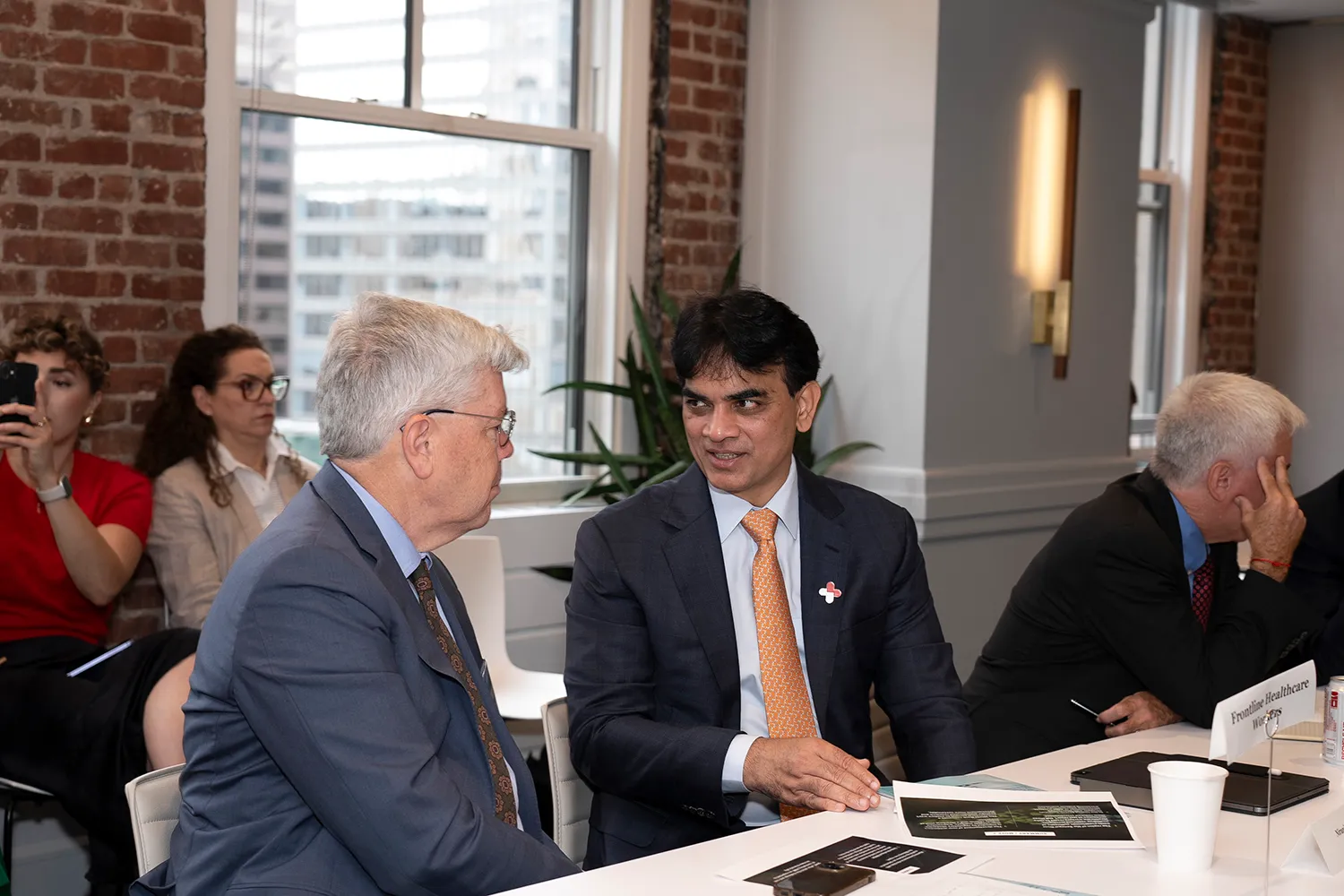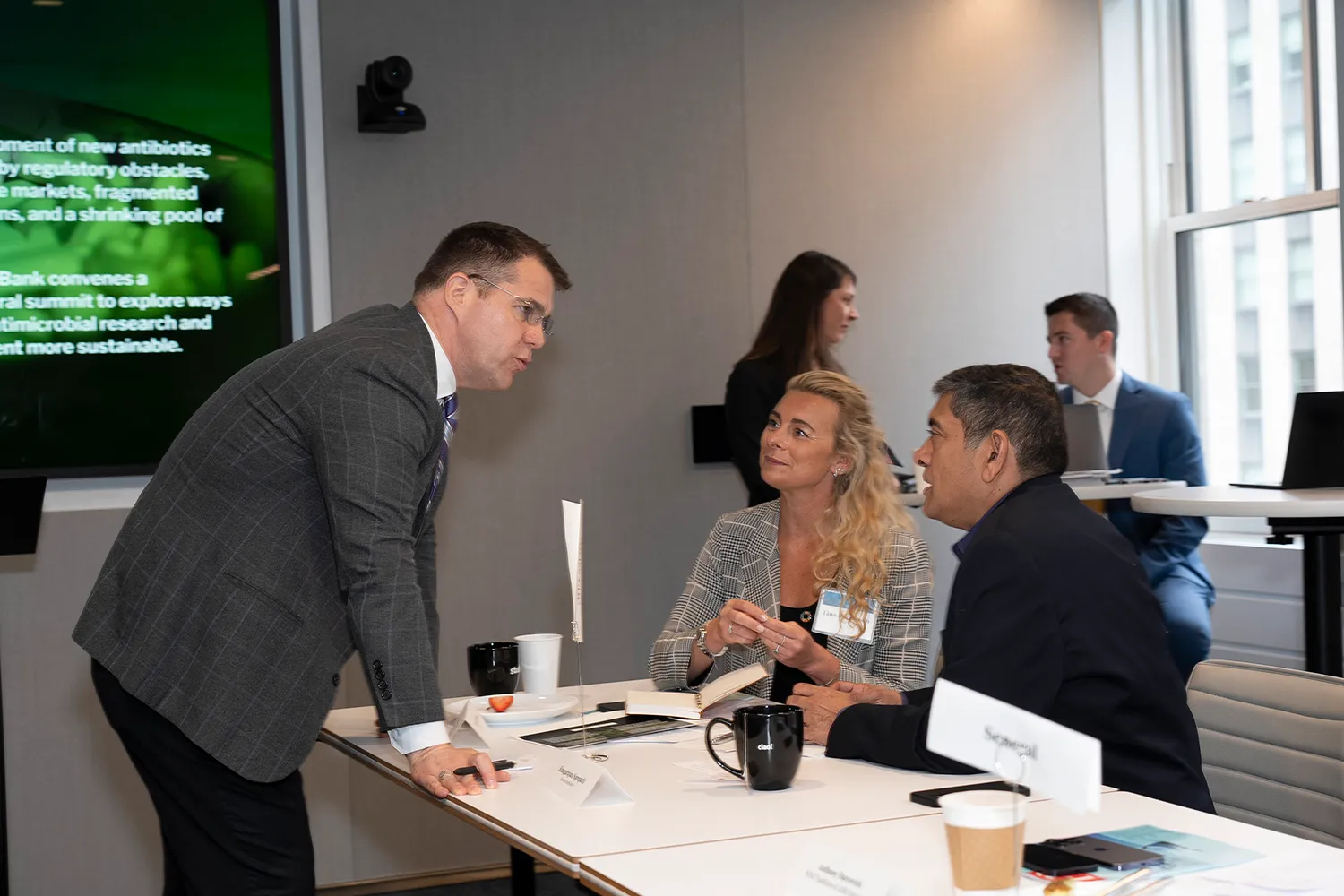A World Without Antibiotics
Confronting the Global AMR Challenge
A synthesis report produced by FP Analytics, with the sponsorship of the AMR Action Fund, CARB-X, Cepheid, Merck, Northwestern Buffett Institute’s Antimicrobial Resistance Global Working Group, Pfizer, and Viatris.
October 2024
Antibiotics are the foundation of modern medicine, but with each passing year, they are becoming less effective. Bacteria and other microorganisms are quickly evolving to thwart the effects of antimicrobial drugs, making infections more dangerous, and medical treatments riskier. The resulting antimicrobial resistance (AMR) is responsible for 1.14 million deaths annually. Over the last 30 years, while mortality in children under the age of five has decreased, deaths among people over the age of five have increased, and aging, immunocompromised, and impoverished populations have been disproportionately affected. By 2050, AMR could be associated with 9.65 million deaths per year while shrinking the global economy by $1.7 trillion.
Outbreaks of bacterial pathogens amount to a “slow burn,” rather than rapid-onset, crisis that poses public health challenges that are distinct from viral pathogen outbreaks. Accordingly, lessons learned from COVID-19, HIV/AIDS, and influenza are not always applicable to long-term planning and preparedness for containing a bacterial outbreak. Meeting the global AMR challenge will require concerted, cross-sectoral expertise and collaboration.
Each year, FP Analytics (FPA) invites practitioners, experts, and thought leaders to participate in interactive, scenario-based simulations that foster dialogue and brainstorm innovative solutions to pressing global problems. In September 2024, FPA convened 26 senior leaders across industry, healthcare, multilaterals, and the scientific community to game out responses to the AMR challenge. The in-person, research-based simulation took place on the sidelines of the 79th United Nations General Assembly (UNGA) in New York City, on the eve of the first UN High-Level Meeting on AMR since 2016. This synthesis report distills key takeaways from the dynamic and immersive simulation, which focused on leveraging cross-sectoral partnerships to tackle the AMR challenge.

Key takeaways:
- Improved surveillance data could help track and predict the emergence, evolution, and spread of AMR microbes. The WHO’s Global Antimicrobial Resistance and Use Surveillance System (GLASS) is a promising start, but more complete and refined data could unlock new insights, including those from the application of artificial intelligence (AI).
- Increasing the availability, accuracy, and timeliness of diagnostic tools is central to combatting antibiotic overuse. Delivering the correct treatments to the places and patients where they are needed starts with fast and accurate diagnosis.
- Accelerating the development of new antibiotics is central to managing the spread of resistant microbes. Controlling AMR will require a globally coordinated set of push and pull incentives and industrial policies, including those that delink revenues from sales volume and harmonize national drug regulations.
- Incentives that accelerate the development of antimicrobials need to be designed to ensure broad access and affordability. Drug pricing, registration, or manufacturing requirements could help equalize access to effective treatments.
- A holistic One Health approach involving coordinated efforts across sectors remains critical to address AMR’s many exacerbating factors. AMR is a multicausal challenge requiring ongoing collaboration among scientists, policymakers, public health officials, industry, donors, multilateral agencies, and the veterinary and agricultural sectors.
- The costs of containing the ongoing and worsening AMR crisis will only increase without urgent and coordinated action and investment that is sustained over time. Achieving the goals of the latest UN political declaration on AMR will require much greater resources than the $100 million that Member States have currently pledged.
Overview of Simulation and Participant Insights
FPA’s research-based, fictional scenario was set in January 2025, but it integrated data and evidence of real-life AMR-related risks and challenges that are already present around the world. Participants were paired up and assigned to roles whose interests and perspectives they were expected to represent throughout the simulation’s two “moves.” Assigned roles included the World Health Organization (WHO); World Bank; European Union (EU); Africa Centres for Disease Control (Africa CDC); fictional coalitions representing the pharmaceutical industry, diagnostics industry, philanthropy sector, AMR scientists, and frontline healthcare workers; and the governments of China, India, Senegal, Vietnam, and the United States.
Move 1: Improved surveillance systems detect alarming AMR increases.
November 2025
In Move 1, WHO AMR Surveillance and Quality Assessment Collaborating Centres in the Mekong River region detected alarming levels of microbes with multidrug resistance genes. The microbes spread quickly due to underdeveloped WASH infrastructure, a lack of IPC mechanisms, and limited access to surveillance, diagnostics, vaccines, and therapeutics. At the same time, new EU rules requiring member states to monitor AMR levels in large sewage treatment plants revealed higher-than-expected levels of resistant microbes across the continent. Modeling based on data from these new surveillance systems projected a rapidly approaching inflection point, after which the challenge and cost of response options would dramatically increase.
Themes in participants’ responses and actions
Several key themes emerged in participants’ responses to Move 1, including a combination of short- and longer-term actions. Participants recognized the immediate need to mobilize resources to expand manufacturing and bolster supply chains, including of drugs and personal protective equipment (PPE), which was led by the teams playing India and China, as well as diagnostics, vaccines, and other countermeasures, led by the teams playing the EU, the US, and the fictional diagnostic and pharmaceutical industry coalitions. Furthermore, there was a general consensus on prioritizing coordination with, and assistance to, frontline healthcare workers in affected communities. This is particularly important because, as the team playing the fictional Healthcare Workers Coalition noted, additional labor, training, and equipment are critical to scale up response capacity rapidly, especially during emergencies.
A debate emerged among participants on the extent to which lessons learned during the COVID-19 pandemic are applicable to AMR. As participants noted, on one hand, collaboration, resource sharing, and a sense of urgency remain necessary. The team playing the WHO led a call to ensure that intellectual property protections did not hamper a global response and warned “antibiotic nationalism” could inhibit effective response as much as vaccine nationalism did during the pandemic. At the same time, participants underscored that AMR is distinct from COVID-19 in important ways. For instance, AMR is a “slow burn” crisis that involves many pathogens and thus does not have a singular cure, vaccine, or treatment. Participants agreed that addressing AMR requires long-term strategic vision and sustained investment. Teams such as the fictional Philanthropy Coalition also called for greater funding for research and development (R&D), including in the global south and particularly in regions and countries most affected by AMR, to build long-term resilience.
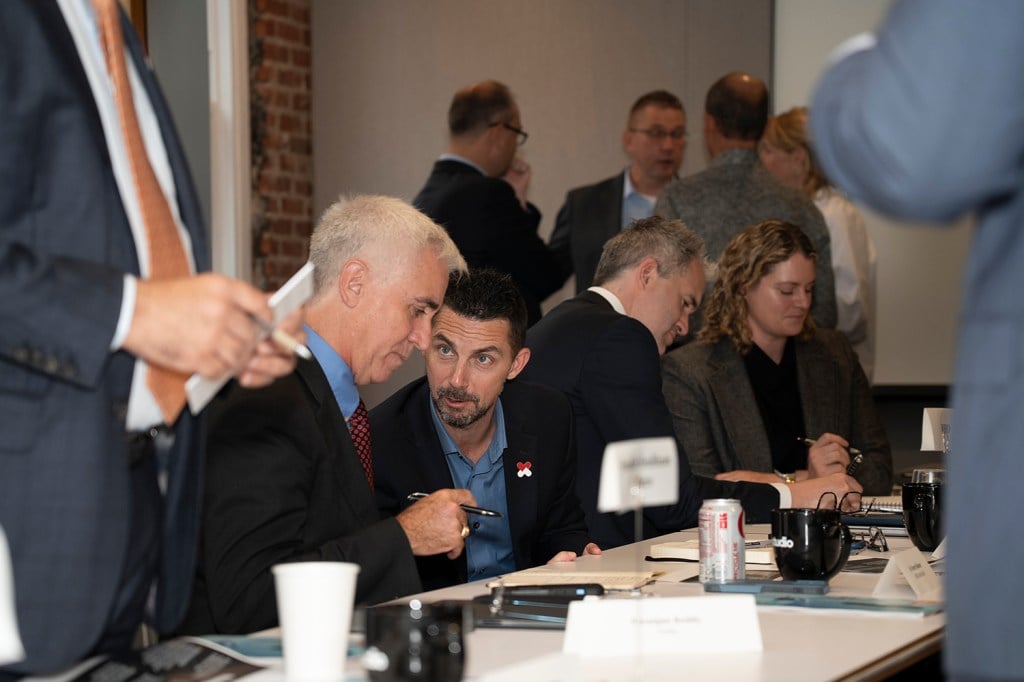
Move 2: Drugs of last resort show reduced effectiveness.
April 2027
In Move 2, outbreaks of multidrug-resistant meningitis in the Senegal River Basin forced healthcare workers to resort to the risky, but inexpensive, antibiotic chloramphenicol. Meanwhile, US hospitals increased the use of carbapenems to treat a growing range of resistant infections. However, even these last-resort antibiotics showed reduced effectiveness. As a result, previously treatable infections became life-threatening, and crucial surgeries became too risky to perform. In the US, entire hospital wings shut down due to widespread bacterial contamination. New drugs were clearly needed, but a host of barriers continued to impede new drug development. To mobilize resources and catalyze progress, the World Bank convened a global summit of key drug-development stakeholders to explore pathways toward a more sustainable innovation ecosystem.
Themes in participants’ responses and actions
Move 2 began with debate about the extent to which Operation Warp Speed—a public-private partnership initiated by the US government to accelerate the development, manufacturing, and distribution of COVID-19 vaccines—can serve as a model for antibiotic development. Some teams, such as the one playing the fictional Pharmaceutical Industry Coalition, noted that large public investments alongside simultaneous—rather than sequential—drug trials and emergency use authorizations may again be necessary to accelerate drug development timelines. Others noted, however, that Operation Warp Speed merely accelerated development that was already underway, as pharmaceutical companies had already invested in platform mRNA vaccines for years prior to the COVID-19 pandemic. A consensus emerged among participants that drug developers should not wait until an emergency to start developing novel antibiotics capable of defeating microbes with known resistance mechanisms. Instead, proactive and sustained investment paired with complementary policy frameworks are needed to meet the AMR challenge.
Funding R&D and the global response was another key topic of discussion. Donor governments have an important role to play, but they may be hesitant to prioritize foreign assistance when confronted with multiple concurrent AMR outbreaks at home and abroad, which in turn stymies effective responses. For example, the team playing the US agreed to invest in antibiotic development and take on risk from the private sector, but also warned that its internal health crisis would prevent Washington from prioritizing investments abroad. There was alignment among participants that more stable funding commitments from a variety of sources could be transformative, with the team playing the fictional Pharmaceutical Industry Coalition calling for financing support from not only governments but other donors such as multilateral agencies and philanthropic organizations. Participants acknowledged the urgency of forging a global, multilateral effort to spearhead drug innovation, with the team representing the World Bank lamenting that 85 percent of the Global Fund comes from G7 countries and calling on G20 nations to do more. However, participants also noted that the challenge of catalyzing and expanding antibiotic development is not merely about drug R&D, with the team playing India arguing in favor of concurrent investment in vaccine and diagnostic R&D as well as loosening distribution bottlenecks to enable last-mile delivery.
Ensuring equity of availability and access was a major theme of discussion. Participants playing Senegal, Africa CDC, and Vietnam prioritized access to existing and forthcoming antibiotics. The fictional Pharmaceutical Coalition team agreed to establish local manufacturing initiatives in India and Africa, while the team playing Africa CDC sought access and pricing guarantees in agreements between the World Bank and the private sector. The team playing the WHO requested that Africa CDC work to harmonize regulations on drug approval and registry across the continent. The team playing the Philanthropy Coalition also paired with the WHO and Frontline Health Workers to roll out widespread meningococcal vaccination in Senegal, demonstrating that creative, multisectoral partnerships can fill gaps in the global AMR response.
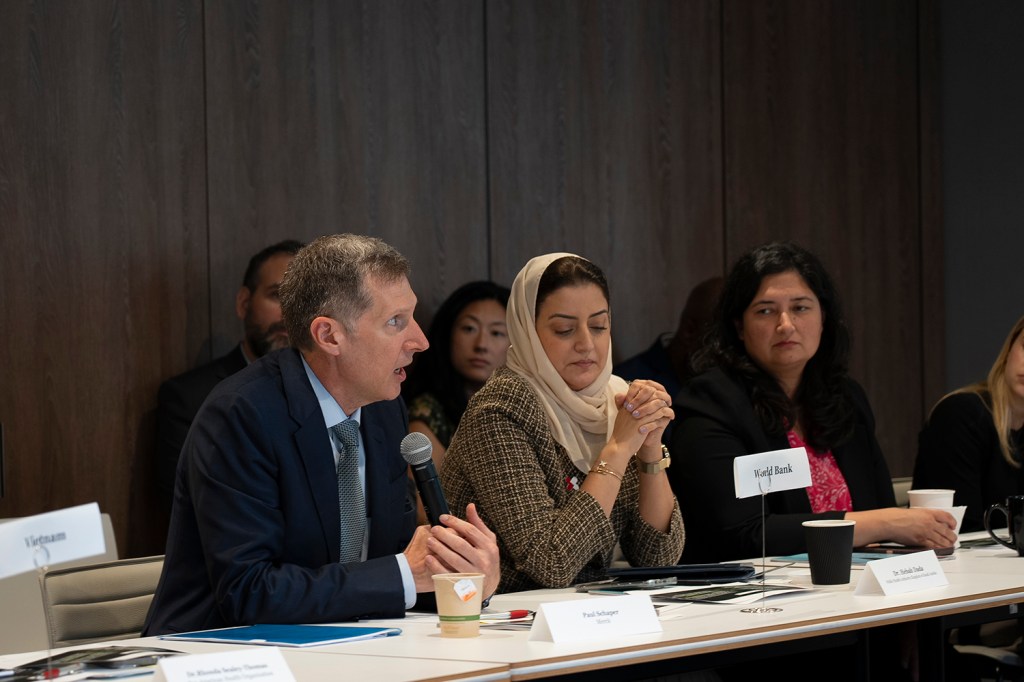
Insights from the Group Reflection
Following the role-playing segments of the simulation, participants were invited to step outside of their assigned roles and reflect on the exercise’s implications for AMR action in the real world. These insights, alongside independent research conducted by FPA to design the simulation, offer a range of key takeaways relevant to AMR decisionmakers:
Improved surveillance data could help track and predict the emergence, evolution, and spread of AMR microbes.
Much remains unknown about AMR, necessitating further research into its causes and containment strategies. Building that research base will require expanding the collection, sharing, and analysis of AMR surveillance data. AMR surveillance attempts to monitor changes in populations of microbes to help understand evolving patterns of AMR. It can include analyzing biological samples in a laboratory or tracking clinical or epidemiological data like national sales or consumption of antimicrobials. Biological samples may be collected from individual patients or from wastewater or other population-level sources. Sharing this data across sectors could facilitate coordination and allow public health leaders to better predict and control AMR outbreaks. Furthermore, efforts to strengthen AMR surveillance could include building laboratory capacity, developing and distributing point-of-care diagnostics, and bolstering and integrating data-reporting systems. For example, the WHO’s GLASS system attempts to standardize AMR surveillance across 137 enrolled countries. If responsibly deployed, AI could analyze AMR surveillance data to predict resistance outbreaks, improve diagnostics accuracy, or identify promising antibiotic candidates.
Increasing the availability, accuracy, and timeliness of diagnostic tools is central to combatting antibiotic overuse.
Diagnostics include laboratory and point-of-care tests, imaging technologies, and chemical products designed to identify the cause or location of a disease, which is essential for appropriate treatment. Diagnostics tests are critical to the surveillance of infectious disease pathogens. Accurately diagnosing infections can reduce the inappropriate use of antibiotics, which is a primary driver of AMR. Timely and reliable diagnosis helps facilitate clinical trials for novel antibiotics by quickly determining a patient’s eligibility. The utility of diagnostics in the fight against AMR is currently hampered by several challenges, including most critically the insufficient availability of, and access to, diagnostics in low-resource settings. One study found that only 1 percent of laboratories in 14 African countries conducted bacteriology testing. Another issue is long wait times for results, which are often only available from laboratories after 48 hours. These factors can lead to the inappropriate treatment of symptomatic patients with broad-spectrum antibiotics. One promising strategy to address these issues is to improve the quality and availability of diagnostics at the point of care, which do not require laboratories and give results within hours.
Accelerating the development of new antibiotics is central to defeating resistant microbes.
The dearth of new antibiotics that are capable of treating resistant pathogens, and the lack of a viable market to motivate such antibiotics’ development present challenges to effectively managing AMR. Developing new antibiotics is expensive and involves intensive research, long approval periods, low approval rates, and a dwindling pool of researchers with the necessary expertise. Antibiotics that are approved face highly competitive markets and limited demand, due to both the short-term nature of successful treatments and the need for new antibiotics to be kept in reserve, for use only when conventional treatments fail. A 2024 WHO report on the pipeline of antibiotic drug candidates concluded that agents in the clinical pipeline, combined with those recently approved, remain insufficient to tackle the growing AMR threat.
Proposed solutions vary, but one key principle that many stakeholders agree on is the need to delink sales from revenue in the antibiotic market. Novel antibiotics, including those that doctors plan to use only as a last resort, need to be prescribed sparingly. Considering the multifold societal value of ensuring a supply of new and effective antibiotics, research and development should not depend on individual unit sales. In short, developing drugs that doctors plan not to use, except as a last resort, cannot depend on selling a large volume of those drugs and profiting on a per-unit basis. Development needs to be incentivized in other ways, and participants in the simulation emphasized that this would require significant financial resources from governments, philanthropy, and other sources to accelerate innovation. Delinking sales from revenue has the added benefit of reducing the profit incentive to overprescribe or overcharge for antibiotics, which could increase access while reducing misuse.
Drug-development incentives may take the form of either “push” or “pull” incentives. Push incentives, such as early-stage grants for research and development, can help to catalyze a new discovery in the lab into clinical testing. In contrast, pull incentives are designed to support late-stage research and development by rewarding the successful development of novel antimicrobials through innovative financing. Given the challenges in the antibiotic market, both push and pull incentives may be needed to sustain momentum on antimicrobial development.
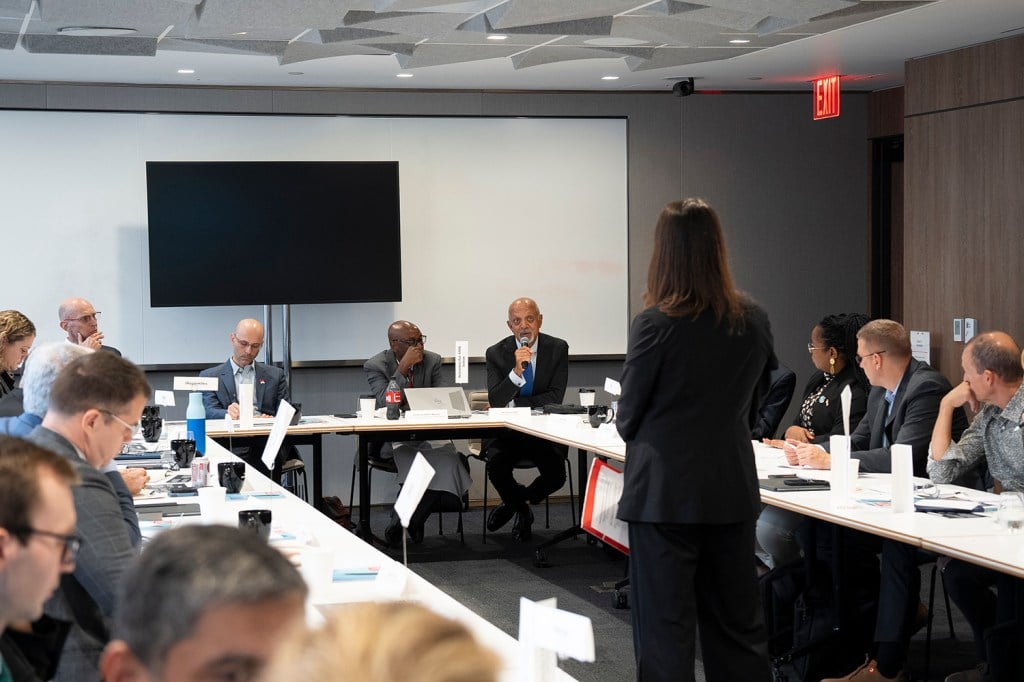
Incentives that reward the successful development of antimicrobials need to be designed to ensure broad access and affordability.
During the simulation, several participants noted that ensuring access to effective antibiotics is not solely a matter of developing new ones, since much of the world lacks access to antibiotics that already exist. Typically, new-to-the-market antibiotics are not registered in low- and middle-income countries (LMICs) and would likely be unaffordable, even if they were registered, given their high prices in the US. To ensure access to the appropriate types of antibiotics where AMR inflicts the highest burden, development incentives and procurement processes may need to come with requirements or benchmarks attached regarding drug pricing, registration, or manufacturing locations. Without such stipulations, revenue may not fully delink from sales volume, dampening the potential benefits on antimicrobial access and stewardship. To strengthen AMR preparedness, the G7 released shared valuation principles for antimicrobials in 2021, hoping to inform pricing and incentive decisions with global health needs.
A holistic One Health approach involving coordinated efforts across sectors remains critical to address AMR’s many exacerbating factors.
Several participants emphasized the importance of breaking down silos to better address different aspects of the AMR crisis. This is the logic behind One Health: a collaborative approach to public and global health that recognizes that the health of people is closely connected to the health of animals and their shared environment. One Health aims to sustainably balance and optimize the health of people, animals, and ecosystems. For example, reducing antibiotic misuse and overuse involves educating healthcare workers and patients and equipping them with appropriate diagnostics and treatments. But it also involves livestock insurance programs to reduce the incentive to misuse antibiotics in agriculture, and adopting wastewater management best practices to reduce drug pollution. At the same time, strengthening WASH and IPC systems, distributing vaccinations and combatting vaccine hesitancy, mitigating the impacts of climate change, and striving for universal healthcare access can slow the spread of AMR, saving lives and buying time for healthcare innovations to deliver lasting gains.
The costs of containing the ongoing and worsening AMR crisis will only increase without urgent and concerted action and investment.
Achieving the goals of the latest UN political declaration on AMR will require much greater resources than the $100 million in financing that Member States have currently pledged. The crisis described in the simulation, while fictional, is rooted in reality, resembling events that have already transpired and are worsening across several countries. As one simulation participant noted, deaths from sepsis are increasing, and surgeons are already delaying or denying abdominal operations for fear of lethal infections. Another participant warned that while it is important to rehearse emergency response, moments of crisis like those described in the simulation are not the time to begin training healthcare workers or developing needed medical countermeasures. The costs of inaction are high, so participants urged the global community to act quickly, intentionally, and collaboratively and to increase the level of investments that are needed now to mitigate and manage AMR threats.
Looking Ahead
Preventing and responding to AMR is a complex challenge for which leaders will need to draw on a wide range of expertise across political, disciplinary, and institutional boundaries.
On September 26, 2024—the day after the simulation—UN Member States formally agreed to a political declaration on AMR after months of negotiations. The declaration sets out an overarching goal to reduce global deaths from bacterial AMR by 10 percent by 2030. It also establishes instrumental targets in service of that goal, aiming that by 2030:
- 60 percent of national action plans will be funded in the national budget, with the help of $100 million in new financing
- 70 percent of antibiotics consumed by humans will be those in the WHO Access group
- 80 percent of countries will have sufficient diagnostic capabilities to test resistance in all bacterial and fungal GLASS pathogens
- 95 percent of countries will participate in the annual Tracking Antimicrobial Resistance Country Self-Assessment Survey (TrACSS)
With respect to R&D and access, the declaration recognizes the critical role of the private sector and the benefits of public-private partnerships such as CARB-X and GARDP. UN Member States also acknowledged the need for “appropriate incentives, including push and pull incentives, in the development of new health products and technologies, while ensuring that mechanisms are in place for equitable access, particularly in developing countries,” and called on international organizations and partners to “take steps to increase global access to and appropriate use of antimicrobials in settings with the highest unmet need.”
The declaration also renews calls for the UN Quadripartite organizations to establish an Independent Panel on Evidence for Action (IPEA) to review and interpret the growing body of evidence on AMR, similar to what the Intergovernmental Panel on Climate Change (IPCC) does for climate science. The declaration represents a major step forward in the global fight against AMR by establishing accountability mechanisms and providing expertise toward vital and realistic goals.
More ambitious goals were in reach, however, and may yet prove necessary to address the full spectrum of antimicrobial misuse. For example, an initial May 2024 draft of the declaration included an additional goal of a 30 percent reduction in antimicrobial use in agri-food systems by 2030, mirroring a commitment in the 2022 Muscat Declaration. Similarly, the May draft included a commitment to eliminate the non-curative use of antibiotics “medically important for human medicine” in animals and crops, while the current declaration commits only to “meaningfully reduce” such use.
Finally, the $100 million in financing pledged for the implementation of NAPs is insufficient to close the global funding gap for AMR action. By comparison, governments mobilized $7.9 billion to combat HIV in 2023, including $5.7 billion from the US. Only 11 percent of AMR NAPs are funded in national budgets, and just 52 percent have a functioning multisectoral coordinating mechanism, according to the WHO, so significant investments remain necessary to implement these plans and realize their objectives.
As the global community mobilizes efforts to achieve the goals set forth in the Summit of the Future at UNGA79 AMR and redoubles commitments toward the 2030 Sustainable Development Agenda and the targets of the 2015 Paris Agreement, it will be crucial to ensure that AMR remains on the global health, development, and climate policy agendas. After all, AMR is a multifaceted, complex challenge that will call for cross-sectoral coordination and collaboration.
The immediate next opportunities to build on the momentum of the AMR political declaration are the G7 Health Ministers’ Meeting in Ancona, the G20 Health Ministers’ Meeting in Rio de Janeiro, and the 4th Global High-Level Ministerial Meeting on AMR in Jeddah. These convenings will provide opportunities to further the international and multisectoral collaboration needed to implement the UN political declaration. Further ahead, the 2025 World Health Assembly and COP30, among others, are other key moments in time when global leaders can come together to accelerate investment and action to address AMR and prevent a world without antibiotics.
By Andrew Doris (Senior Policy and Research Analyst), Dr. Mayesha Alam (Senior Vice President of Research), and Allison Carlson (Executive Vice President of FP Analytics and Events). Photos by Jonathan Heisler.
This synthesis report was produced by FP Analytics, the independent research division of The FP Group, with the sponsorship of the AMR Action Fund, CARB-X, Cepheid, Merck, Northwestern Buffett Institute’s Antimicrobial Resistance Global Working Group, Pfizer, and Viatris. FP Analytics retained control of the research direction and findings. Foreign Policy’s editorial team was not involved in the creation of this content.
